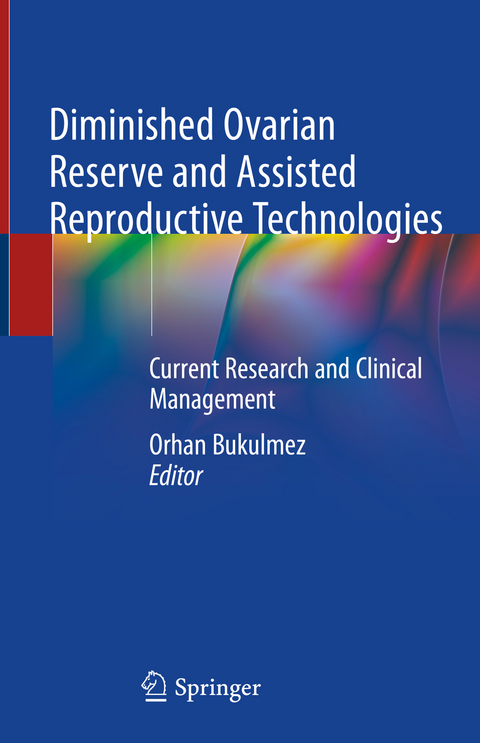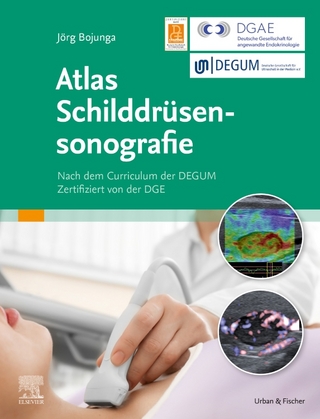
Diminished Ovarian Reserve and Assisted Reproductive Technologies
Springer International Publishing (Verlag)
978-3-030-23234-4 (ISBN)
Utilizing the latest evidence and authored by an international array of thought leaders, Diminished Ovarian Reserve and Assisted Reproductive Technologies is an excellent resource for reproductive medicine and REI specialists, IVF lab professionals, and students and residents in these areas.
Orhan Bukulmez, MD, Associate Professor and Division Director, Division of Reproductive Endocrinology and Infertility; Practice and Medical Director, Fertility and Advanced Reproductive Medicine Assisted Reproductive Technology Program; Medical Director, UT Southwestern Fertility Clinic; Chief, Gynecologic Endocrinology Service, Parkland Health and Hospital System; Department of Obstetrics and Gynecology, University of Texas Southwestern Medical Center, Dallas, TX, USA
Part I: The paradigm of diminished ovarian reserve, conventional & adjuvant treatment approaches for assisted reproductive technologies. 1. Introduction: The Scope of the Problem of Diminished Ovarian Reserve.- 2. Ovarian and Hypothalamic Aging.- 3. Natural History of Diminished Ovarian Reserve.- 4. Definitions and Relevance: Diminished Ovarian Reserve, Poor Ovarian Response, Advanced Reproductive Age, Premature Ovarian Insufficiency.- 5. Food Supplements and Hormonal Products to Improve Assisted Reproductive Technology Outcomes in Diminished Ovarian Reserve Patients.- 6. Traditional Chinese Medicine for Assisted Reproductive Technology.- 7. Controlled Ovarian Stimulation Protocols for IVF: From First IVF baby in the United States and Beyond.- 8. Conventional Controlled Ovarian Stimulation Protocols for Diminished Ovarian Reserve Patients and Poor Responders.- 9. Natural Cycle Approaches for ART.- Part II: Minimal and Mild Stimulation Protocols.- 10. The International Society forMild Approaches in Assisted Reproduction (ISMAAR) Definitions for Mild Stimulation and Their Rationale for Assisted Reproductive Technologies.- 11. Current Outlook of Minimal and Mild Stimulation Protocols for Assisted Reproductive Technologies in Women with Diminished Ovarian Reserve and/or Advanced Reproductive Age.- 12. Minimal Stimulation Protocol for Assisted Reproductive Technologies in Women with Diminished Ovarian Reserve and/or Advanced Reproductive Age.- 13. Mild Stimulation Alternatives to Minimal Stimulation.- 14. Control of Luteinizing Hormone (LH).- 15. Preventing Premature Ovulation.- 16. Trigger Agents and Post-trigger Testing.- 17. Oocyte retrieval.- 18. Fertilization: Conventional IVF versus ICSI.- 19. Embryo Culture: Cleavage versus Blastocyst Stage.- 20. Endometrial Considerations for Minimal Stimulation.- 21. Frozen Embryo Transfer Preparation.- 22. Minimal and Mild Stimulation IVF Results.- Part III: Utilization of Contemporary Technologies in Diminished OvarianReserve Patients.- 23. Fresh versus Frozen Embryo Transfer.- 24. Comprehensive Chromosome Analysis in Diminished Ovarian Reserve Patients.- Part IV: Future Prospects.- 25. Artificial Oocyte and Artificial Ovary Development.- 26. Activation of Ovarian Cortex.- 27. Oocyte Freezing at an Earlier Age.- 28. Ovarian Cortical Tissue Biopsy for Freezing and Auto Transplantation.
| Erscheinungsdatum | 17.10.2019 |
|---|---|
| Zusatzinfo | XX, 360 p. 47 illus., 31 illus. in color. |
| Verlagsort | Cham |
| Sprache | englisch |
| Maße | 155 x 235 mm |
| Gewicht | 726 g |
| Themenwelt | Medizinische Fachgebiete ► Innere Medizin ► Endokrinologie |
| Studium ► 1. Studienabschnitt (Vorklinik) ► Histologie / Embryologie | |
| Schlagworte | Assisted Reproductive Technologies (ART) • Chromosome analysis • Diminished ovarian reserve (DOR) • embryo cryopreservation • Embryo culture • Embryo Transfer • Hormonal supplement • In vitro fertilization (IVF) • Mild stimulation protocol • Natural cycle approach • Ovarian Aging • Ovarian stimulation protocol • Premature ovarian insufficiency • Premature ovulation • Trigger agent |
| ISBN-10 | 3-030-23234-4 / 3030232344 |
| ISBN-13 | 978-3-030-23234-4 / 9783030232344 |
| Zustand | Neuware |
| Haben Sie eine Frage zum Produkt? |
aus dem Bereich


